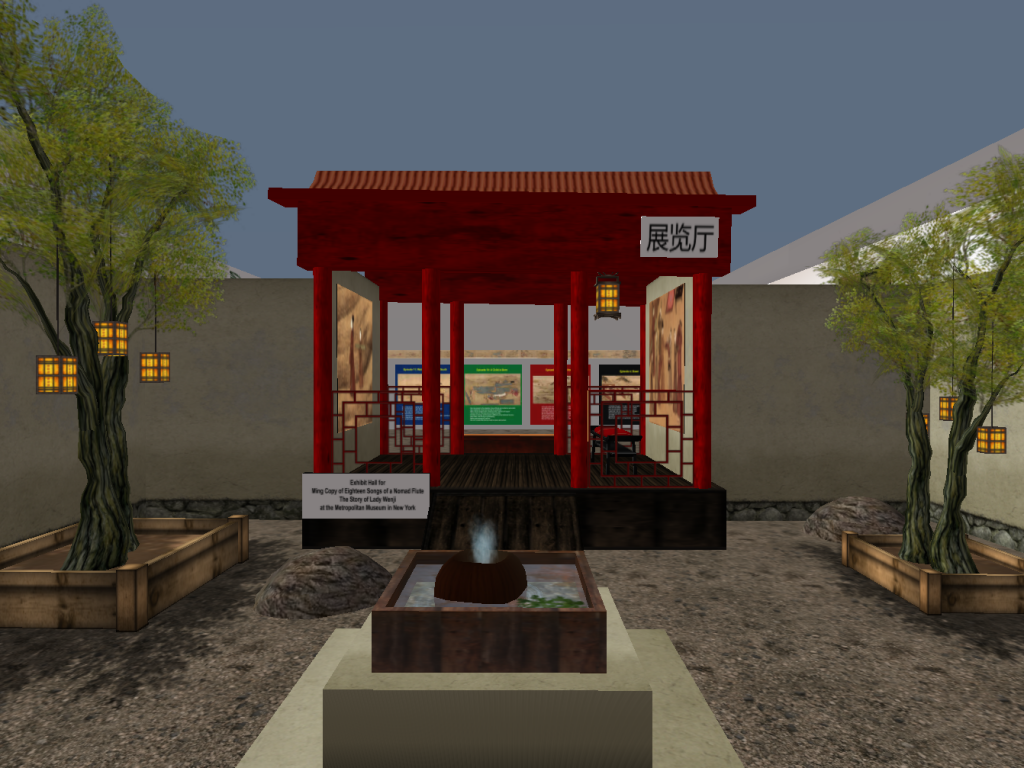In the Main Gallery: The story of the poet Lady Wenji is a sad and haunting one.She was kidnapped by nomads and spent 12 years in captivity. During that time the poetess bore two children to the nomad chief. When she was finally ransomed she had to leave the two children behind. Lady Wenji lived at the end of the Han Period. During the Tang Period poems were found said to be her work. In the Northern Song Period another poet wrote the eighteen “songs”. One thousand years after the abduction, in the Ming Period, a beautiful scroll of the eighteen scenes was created accompanied by the poem for each scene.
Episode 13 poem, The Departure:
My children pull at my clothes, one on either side;
I cannot take them with me, hut in leaving them behind, how I shall miss them!
To return home and to depart in sorrow; my emotions are mixed.
Now I must abandon my children in order to return home.
Across ten thousand miles of mountains and rivers, I shall arrive at our border stations.
Once having turned away, forever there shall be no news from my children.
With tear-stained face I turn toward the setting sun;
All day long I have stood there, looking to the south and then to the north.
Met Publication of Song Dynasty Scroll: Eighteen Songs of a Nomad Flute, The Story of Lady Wen-chi.A Fourteenth Century Handscroll in the Metropolitan Museum of Art.
Robert A. Rorex and Wen Fong.New York, New York Graphic Society, 1974. Poem by Liu Shang. Translation by Robert A. Rorex and Wen Fong.


